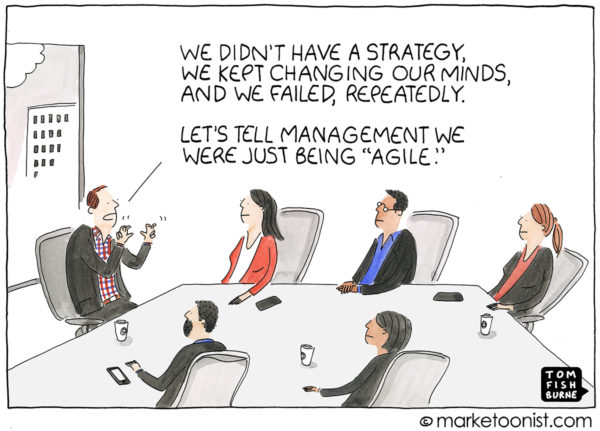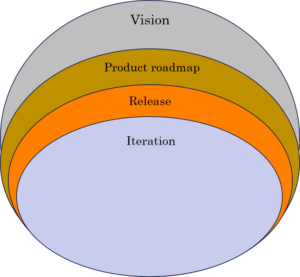In Hungary, since the 2000s, increasing emphasis has been placed on the agile tools in project management. Although agile toolkits are "lightweight" and simpler than traditional project management tools, their use still causes problems for many organisations. This is due to cultural elements, changing roles and responsibilities and very different mindsets.

In many cases, stakeholders misunderstand agile and see it as a "methodology", and we also see cases where those working in agile apply only the elements they are comfortable with, thus throwing the project into chaos.
Misconceptions about agile projects
So, along the lines of the above, let's first look at the most common misconceptions we have encountered:
- Documentation is not required for Agile projects
- Agile projects are completed faster/cheaper
- The client side has fewer tasks in agile projects
- Agile approaches can be successfully applied to any project
- Agile projects do not require pre-defined goals, as they are developed "on the go"
- We do daily stand-ups, so we are already agile
- Agile projects do not need to be planned
The above list, while by no means exhaustive, shows how chaotic a project thought to be agile can become, which of course can lead to inappropriate results. One of the consequences of these misconceptions can be that teams "jump" into sprints without any conscious preparation, without clarifying the objectives, without knowing who they are actually delivering to (no, we are not always delivering to the person who is funding the project), and in many cases without even considering whether the project can be financially viable.
Agile project planning levels
In our experience, agile projects can be broken down into well-defined areas. These can be implemented using different tools to achieve the agile design onion, i.e. the five levels of agile design, which are:
- vision definition
- product roadmap planning
- release planning
- iteration planning
- daily planning

Of course, these elements are not a one-off exercise, as changes during the project can affect all levels of the planning onion. As such, these levels require a continuous iteration.
What elements are involved in the planning and preparation of agile projects?
We believe that agile projects can be most successful if the team develops and adapts different good practices. As a consequence, the tools described here may be one possible solution, but there is also a very wide range of tools available to implement them.
Agile project initiation
We believe it is important that projects, whether managed in an agile or traditional way, require preparation and specific objectives. The main purpose of the preparation is to ensure that this commonly agreed and known vision is established and captured, and it is also important to clarify the importance and value of the objectives and the expected return on investment of the projects. Without objectives, there can be no project, and a change in the end goal in the meantime would, in our opinion, call into question the very existence of the current project. We also consider it important to have an "agile business case", which, although similar to a traditional business case, is less detailed. It is more important to see the expected return on investment of the project in terms of magnitude, the potential costs, revenues, business objectives, expectations and the expected user base.
Starting an Agile project
The launch is essentially a commitment by the management to make the project a reality. This requires a concrete management decision, based on the vision and business plan mentioned earlier. We believe it is important for management to commit to project objectives rather than specific deliverables in such an approach, as we accept that requirements may change even towards the end of the project. However, these changes may well not change the top-level goal or vision, only the characteristics of its tangible products.
An agile charter can help to document the goals in a short, simple way, and it is also necessary to get to know the stakeholders and users, which can be helped by stakeholder analysis and persona building. Knowing the above, it is possible to gather high-level functionalities, scale them up and organise them into a roadmap.
Release tervezés
The aim of release planning is to deliver the highest value, but not necessarily the most work-intensive, elements as early as possible, which is most often done through releases. It is not the goal to define every release and every piece of content precisely, it may be sufficient to think in terms of the first release or at most two. If the most important features are cleverly decomposed and estimated, story mapping can be used to define the MVP and the goal of the next release. From this it is possible to predict how many iterations the release will require.
Iteration planning
Once the release target is defined, the iteration planning can start. Here the team is already committed to the goal of the iteration, but remember that the goal of the "zero" and pre-release iterations is typically different from the others. A suitable approach to the iteration process could be scrum, xp, kanban, or even scrumban.
Daily planning
The daily standups also help the team to develop transparency and plan their daily work. Even in this case, the goal is not to have a long ceremony, try to make this daily meeting 15 minutes.
Tools, techniques
In our opinion, the success of agile projects does not depend on techniques in the first place, but they can be of great help. Gamified exercises help to engage the team and make the tasks more enjoyable.
Examples of such tools include a vision board, product box, sailboat, persona, t-shirt sizing, big wall, poker planning, remember the future, prune the product tree.
We believe that following the processes described above can make an agile project more successful, and these tools should be in the toolkit of every scrum master, product owner and agile project manager (yes, many people use that term) these days.
If you would like to try out and learn how to use this process and tools in practice, we recommend our agile project simulation, during which participants work on a specific project from idea generation to project completion.
Have a question? Contact us!

 Designabc
Designabc